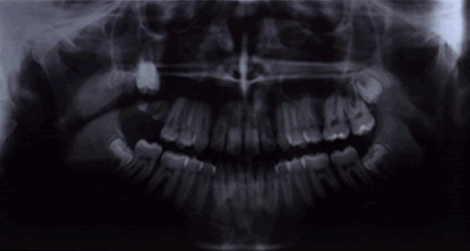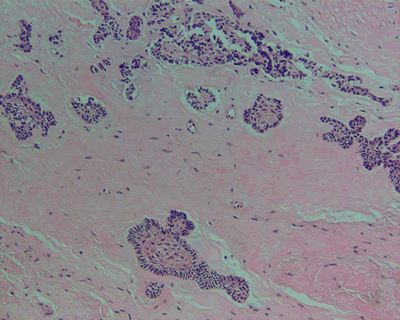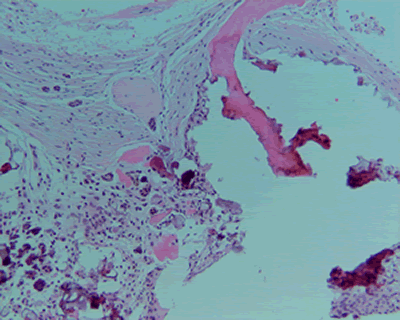Return to Case of the Month Archives
Impacted Tooth # 3 Associated with Radiolucent/Radiopaque Lesion
Dolphine Oda, BDS, MSc
doda@u.washington.edu
Contributed by
Drs. Rick Crinzi, Gregory Ogata, & Camran Zafarnia
Bellevue, Washington
Case Summary and Diagnostic Information

This is a healthy 14-year-old female who presented at Dr. Camran Zafarnia’s dental office for non-eruption of a maxillary right molar.
Diagnostic Information Available
This is a healthy 14-year-old female who presented at Dr. Camran Zafarnia’s dental office for non-eruption of a maxillary right molar. She was referred to Dr. Gregory Ogata, an orthodontist, for evaluation of this condition. At the time of her evaluation with Dr. Ogata, a panorex radiograph was performed. The radiograph revealed the delayed eruption of tooth #3 (Fig 1). The patient was referred to Dr. Crinzi for evaluation and treatment. The clinical examination revealed erupted first and second molars in the maxillary left and bilateral mandibular quadrants; these were missing from the maxillary right quadrant. There was no evidence of bony expansion or soft tissue swelling. The patient denied any symptoms associated with this area.

Figure 1. Panoramic view at first presentation demonstrating missing right posterior second and third molars with an impacted first molar. The latter is associated with a well-demarcated, radiolucency with radiopacity and three tooth-like structures. Notice the normal eruption and development of teeth in the other three quadrants.
Her past medical history is non-contributory. The patient is in excellent health and is on no medications.
The clinical findings were remarkable for missing molars from the maxillary right quadrant. The radiographic findings confirmed missing maxillary right second and third molars and an impacted first molar (tooth #3) (Fig 1). The remaining teeth were erupting normally and according to the age of the patient. The impacted tooth #3 was surrounded by a radiolucent/radiopaque lesion with tooth-like structures.

Figure 1. Panoramic view at first presentation demonstrating missing right posterior second and third molars with an impacted first molar. The latter is associated with a well-demarcated, radiolucency with radiopacity and three tooth-like structures. Notice the normal eruption and development of teeth in the other three quadrants.
The histology revealed a fragment of a cystic structure, a benign neoplasm of odontogenic origin and tooth-like structures. The cystic structure comprised a small portion of the specimen and was consistent with a dentigerous cyst. The benign soft tissue neoplasm comprised the bulk of the specimen and was composed of mixed epithelial and connective tissue components (Fig 3). The epithelial component was made up of small clusters, cords, and islands while the connective tissue ranged from myxoid and primitive to collagenous and hyalinized. The latter was predominant. Also present were clusters of calcified material (Fig 4), most of which were dysplastic in nature. The combination of the microscopic and gross multiple tooth-like structures were diagnostic features of an ameloblastic fibro-odontoma.

Figure 3. Low power (x200) histology shows dense fibrous connective tissue background with small nests of odontogenic epithelial islands. Some of the islands are lined by a layer of palisaded columnar epithelial cells.

Figure 4. Low power (x100) histology shows clusters of calcified material.
After you have finished reviewing the available diagnostic information